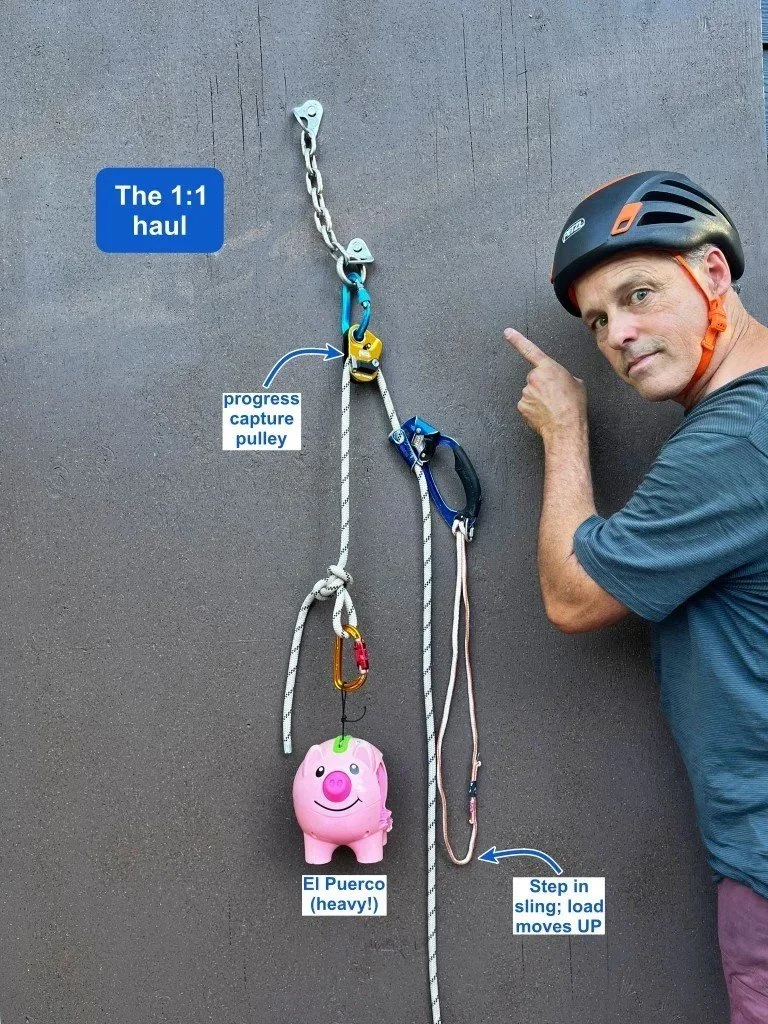How to 1:1 haul a load that’s heavier than you
Premium Members can read the entire article here:
The standard way to haul on a big wall, with moderate loads, is a 1:1 haul with a redirect on the anchor.
By standing in a sling or aid ladder attached to the haul strand, you use your bodyweight to lift the load, rather than pulling up with your arm muscles, always a good thing!
Step down in the sling, and the load moves up. Slide the ascender up, repeat about 100 times, and your pig is at the anchor.
It looks something like this:
Let's say you rig your haul system with a highly efficient progress capture pulley on the anchor (such as a Petzl Traxion). If you apply your bodyweight to the pulling side of the rope, AND your bodyweight is greater than both the load and the slight added friction from the pulley, the load should lift.
For example, if you weigh 75 kg / 165 lbs, and you have a haul bag that weighs 50 kg / 110 lbs, simply applying your bodyweight by stepping onto the pull strand should lift your load.
So far so good. But . . .
What if your haul rope runs over rock between you and the load, adding additional friction?
What if your load is more like 60+ kg instead of 50 kg?
Now, simply standing with your static bodyweight on the haul strand may not be enough to lift the load.
If this happens, many climbers think . . .
They need to resort to a more complicated 2:1 hauling system.
Or do something more physically extreme, (photo below) or have your partner also attach to the rope to do a tandem haul, or something like that.
Guess what? There’s a clever trick to still use a 1:1 hauling system, even when the load you're lifting might be greater than your bodyweight.
There are two components.
Lifting UP on the load strand with one hand. (To be clear, you're not trying to lift the entire haul bag with one arm; just giving it a little bit of pull so you can lighten the load enough to move the load by pushing down with your foot on the other side.)
Bouncing / shock loading the hauling strand with your foot.
When you do these two things simultaneously, it both slightly reduces the load on the anchor AND multiplies your bodyweight on the haul side, letting you lift a load that weighs more than you do. Cool!
Want to see a video of this technique on El Capitan?
How about an example of the wrong way to 1:1 haul a big load?
Join my Premium Membership to read the rest of the article.
Thanks for your support!



